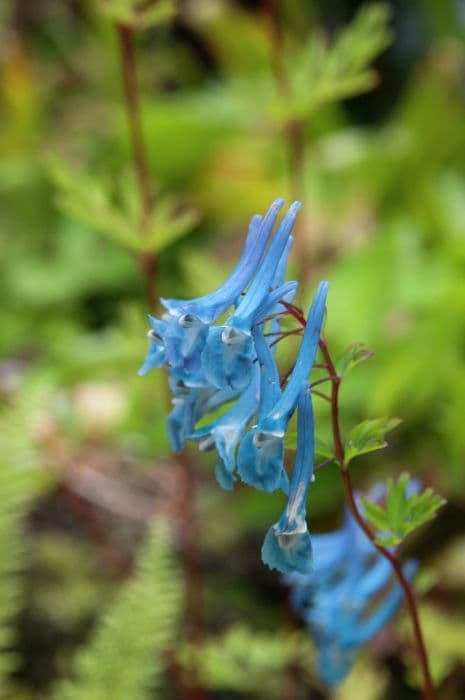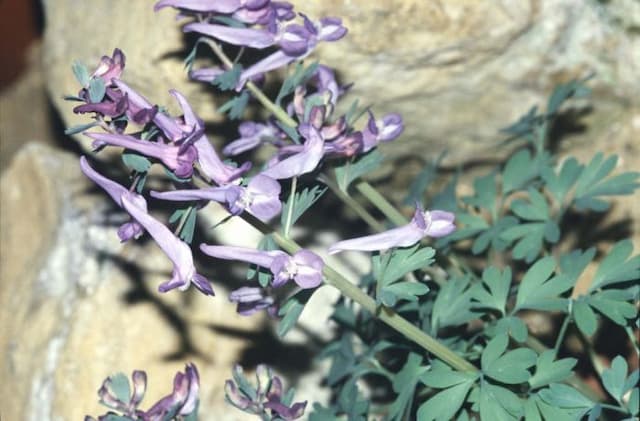California poppy 'Fruit Crush' Eschscholzia californica 'Fruit Crush'

ABOUT
'Fruit Crush' is a compact annual to around 25cm tall with silvery-green, feathery foliage and upward-facing, semi-double, fluted blooms in shades of orange, pink and yellow
About this plant
 Names
NamesSynonyms
California Poppy, Golden Poppy, California Sunlight, Cup of Gold.
Common names
Eschscholzia californica 'Fruit Crush'.
 Characteristics
CharacteristicsLife cycle
Annuals
Foliage type
Deciduous
Color of leaves
Green
Flower color
Orange
Height
1 foot (30 cm)
Spread
1 foot (30 cm)
Plant type
Herb
Hardiness zones
8
Native area
California
Benefits
 General Benefits
General Benefits- Low maintenance: Eschscholzia californica 'Fruit Crush', commonly known as California poppy, is drought-tolerant and requires minimal care once established.
- Aesthetic Appeal: With its vibrant orange, red, and pink shades, the California poppy adds a burst of color to any garden or landscape.
- Attracts Pollinators: The flowers of the California poppy are known to attract bees, butterflies, and other beneficial insects, supporting local ecosystems.
- Easy Propagation: California poppies can self-seed, making them easy to propagate and enabling them to fill in garden spaces naturally.
- Soil Stabilization: The plant's root system helps to prevent soil erosion, making it a good choice for slopes or areas prone to degradation.
- Drought Resistance: Once established, California poppies can tolerate long periods without water, making them suitable for xeriscaping and arid environments.
- Edible Parts: The leaves of young California poppy plants can be used in salads, offering a unique flavor to culinary dishes (although consumption should only be done with knowledge of safe preparation practices).
 Medical Properties
Medical PropertiesThis plant is not used for medical purposes.
 Air-purifying Qualities
Air-purifying QualitiesThis plant is not specifically known for air purifying qualities.
 Other Uses
Other Uses- California poppy 'Fruit Crush' petals can be used as a natural dye for fabrics, imparting a subtle yellow to orange hue, depending on the mordant used.
- The leaves and stems of the California poppy can be used in floral arrangements as filler foliage to add a delicate, feathery texture.
- Dried California poppy 'Fruit Crush' seed pods can be used in crafts or as unique additions to homemade potpourris.
- Silky, colorful petals of this specific cultivar may be used in paper making to create decorative, textured paper.
- California poppy 'Fruit Crush' can be used in photography as a subject for practicing macro photography skills due to its intricate details.
- The plant can serve as an educational tool to discuss plant adaptation and survival in xeriscaping since it is drought-tolerant and thrives in dry conditions.
- Individuals who practice the art of ikebana, Japanese flower arranging, may utilize California poppy's form and lines for their arrangements.
- The vibrant flowers can be used to create all-natural confetti for parties or weddings, as they are biodegradable and environmentally friendly.
- California poppy 'Fruit Crush' can act as an indicator plant in a garden since its leaves close at night or on overcast days, hinting at changes in light conditions.
- The blooms can be pressed and used in the craft of making bookmarks or greeting cards, preserving their beauty and elegance.
Interesting Facts
 Feng Shui
Feng ShuiThe California poppy is not used in Feng Shui practice.
 Zodiac Sign Compitability
Zodiac Sign CompitabilityThe California poppy is not used in astrology practice.
 Plant Symbolism
Plant Symbolism- California Poppy: The California Poppy represents sleep, peace, and death due to its sedative properties and its use in traditional remedies for these purposes.
- California Poppy: It is a symbol of remembrance, primarily for those fallen in war, similar to its European counterpart, the red poppy.
- California Poppy: Also, it signifies resilience and perseverance as the California Poppy can thrive in harsh conditions and recover from difficult situations thanks to its drought-tolerant nature.
- California Poppy: The flower serves as an emblem for the state of California, symbolizing the region’s wild beauty and representing the spirit of the state.
 Water
WaterCalifornia Poppy 'Fruit Crush' should be watered deeply but infrequently, as it is drought-tolerant. Ideally, you should give the plants a good soak, allowing water to penetrate the soil to a depth of at least 10-12 inches. This can be achieved by applying approximately 1 gallon of water per plant every 7 to 10 days, depending on weather conditions. During hot and dry spells, you may need to water more frequently, but always allow the soil to dry out between watering sessions. Overwatering can lead to root rot and other issues, so it is better to err on the side of underwatering for this plant.
 Light
LightThe California Poppy 'Fruit Crush' thrives in full sun conditions. It should be placed in a location where it can receive at least 6 to 8 hours of direct sunlight daily. The best spot for this plant is an open area, away from tall buildings or trees that could cast shade on it. Ample sunlight will ensure the healthiest growth and most vibrant blooms.
 Temperature
TemperatureCalifornia Poppy 'Fruit Crush' prefers moderate to warm temperatures, with an ideal range between 60°F and 85°F. It can withstand short periods of higher temperatures up to 100°F. The plant is also somewhat cold-tolerant and can survive minimum temperatures hovering around the freeze point of 32°F, though it performs best when not exposed to prolonged freezing conditions.
 Pruning
PruningPruning California Poppy 'Fruit Crush' encourages more blooms and extends the flowering season. Deadheading spent flowers can be done throughout the blooming period to keep the plant looking tidy. Cutting back the foliage by a third after the first bloom flush can stimulate a second round of flowering. The best time for heavy pruning is late winter or early spring, before the onset of new growth.
 Cleaning
CleaningNot needed
 Soil
SoilCalifornia Poppy 'Fruit Crush' thrives in well-draining soil with a pH between 6.0 and 7.5. A mix containing sandy loam or gravelly soil is ideal. Organic matter like compost can be added to enrich poor soils, but avoid heavy, clay-like substrates that retain moisture.
 Repotting
RepottingCalifornia Poppies typically do not require frequent repotting as they are annuals. They can be sown directly into the ground or into a permanent container where they can grow without disturbance.
 Humidity & Misting
Humidity & MistingCalifornia Poppy 'Fruit Crush' is tolerant of a wide range of humidity levels and prefers a dry to moderate humidity climate. It does not require any special humidity adjustments.
 Suitable locations
Suitable locationsIndoor
Grow in bright, direct light and well-draining soil.
Outdoor
Plant in full sun and well-draining sandy soil.
Hardiness zone
5-10 USDA
 Life cycle
Life cycleThe life of California poppy 'Fruit Crush' begins with seed germination, typically in late winter or early spring, when soil temperatures warm up. The seedlings emerge, forming a rosette of leaves as they establish a root system. As the plants mature in the spring and early summer, they produce long stems topped with large, vividly colored, satiny flowers which often exhibit a range of shades including orange, red and pink. After pollination, primarily by bees, the flowers develop elongated seed pods that eventually dry and split open to release numerous small, dark seeds. This annual or perennial plant then completes its cycle; if conditions allow, the seeds may lie dormant until the next suitable growing season, or they might germinate immediately if moisture is available. California poppy 'Fruit Crush' may also self-sow, ensuring the presence of future generations without additional planting.
 Propogation
PropogationPropogation time
Spring-Early Summer
The California poppy, known scientifically as Eschscholzia californica 'Fruit Crush', is most commonly propagated through seeds. The ideal time to sow California poppy seeds is in early spring, after the danger of frost has passed, or in autumn where winters are mild. To propagate, simply scatter the seeds directly onto a well-prepared garden bed where you intend the flowers to grow, as they do not transplant well due to their delicate root system. After scattering, gently press the seeds into the soil but do not cover them, since they need light to germinate. Keep the soil moist until germination, which typically occurs within two to three weeks. This method harnesses the plant's natural cycle, reproducing the way it self-seeds in the wild.









